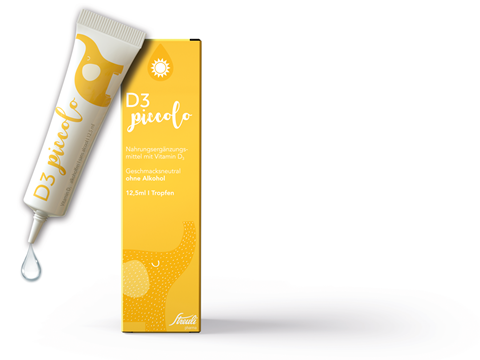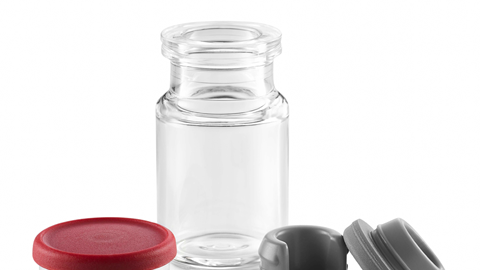The R&D efforts of Europe’s pharma packaging companies when it comes to drug dispensing systems are focused on several ‘pain points’, among them an ageing population, child safety considerations, increasing compliance, product security and sustainability. Victoria Hattersley talks to some industry representatives to find out more about the unique challenges involved in dispensing medications and the different ways their organizations are approaching these.
The question of safety
The safety of the consumer is of course an important consideration for any area of packaging manufacture, but when it comes to pharmaceutical products, it’s critical. Not only do the drugs themselves have to reach the patient uncontaminated, but there are also aspects such as child safety to bear in mind when dealing with potentially lethal substances.
There are many examples of innovation in child-resistant dispensing systems to choose from. Each year at major pharma packaging shows we can see the progress exhibitors are making in this area. At this year’s Pharmapack, Nemera’s Safe’n’Spray™ – a smart electronic delivery concept with child-resistant and locking features – was named the ‘Best Innovation in Drug Delivery Device’. The concept employs a reusable electronic locking unit, child-resistant features and fingerprint identification to monitor drugs delivered and prevent the patient from overdosing.
“Safe'n'Spray offers a unique possibility to reuse the ‘SAFE’ electronic part once the ‘SPRAY’ part with the drug is over (eco-friendly on both economic and ecologic sides),” says Pascale Farjas, global category manager for ENT, Nemera. “The fingerprint sensor for patient unique identification acts as an easy and intuitive child-resistant feature, without the need for adding any secondary packaging with a child resistant function. Last but not least, Safe'n'Spray is a connected device, linked with e-Nemera CS, Nemera’s cloud platform. It offers access to patients, healthcare professionals and pharma companies for various services: treatment management, statistical analysis, etc.”
Innovation in sterile containment systems that are also easy to dispense is also ongoing. To give one example, Jason Stephens, director, Containment Systems R&D at West Pharmaceutical Services, tells us about some of the product launches from his company at Pharmapack. “A new seal called the Flip-Off® CCS Seal is a ready-to-use, sterile, high-quality capping product for a 5mL Daikyo Crystal Zenith vial. Flip-Off® CCS Seals are manufactured using our TruEdge™ technology and are 100% vision inspected to provide a high-quality seal to maintain container closure integrity and supports a safe, convenient user experience.
“International regulatory guidelines have significantly influenced clean crimping processes for drug manufacturers now requiring vial-capping in clean rooms or sterile suites. Use of unsuitable seals can have an impact on clean crimping procedures and create risks for patients. The Flip-Off® CCS Seal is the ideal solution for aseptic crimping as it is manufactured in an ISO 8 clean environment, offering excellent particulate control, limits risk of contaminates and offers a certification for bioburden.”
Reducing risk for healthcare workers
But it’s not just the safety of the patients that has to be considered – there are also risks for healthcare workers and packaging plays its part here, too. According to World Health Organization estimates, each year healthcare workers incur two million accidental needlestick injuries that could result in serious infections such as hepatitis B and C, and HIV. Delivery systems must be optimized to prevent the spread of such bloodborne diseases as much as possible.
“We appreciate that needlestick injuries are a serious concern for healthcare practitioners, so we developed the NovaGuard system to provide care providers with greater control and protection from potentially life-threatening exposure to harmful diseases when administering injections,” says Jason Stephens.
He tells us that the NovaGuard SA Pro 1mL device has FDA 510k clearance in the US and meets the European 2010/32/EU directive for the prevention of sharps injuries. Additionally, it can be deployed using a single-handed technique and was designed to prevent pre-activation during the handling of prefilled syringes (PFS). The system is compatible with ISO standard 1mL long glass staked-needle syringes and is transparent for ease of drug extraction, inspection and delivery. “The design also facilitates easy assembly of glass prefilled syringes with minimal change parts and changeover time to existing assembly equipment for manufacturers.”

Safety goes hand-in-hand with product security and tamper-evident solutions. “For packaging suppliers, product security should be a multi-pronged approach,” says Martina Christiansen, sales director Tubes, Hoffmann Neopac AG. “For starters, tamper evidence is a key element to discourage counterfeiting or other illegal product diversion from the supply chain. Child resistance and senior friendliness also are factors, as packagers must continuously find happy mediums between making packages unopenable for small children but easy to open for older patients who may have dexterity and muscle strength issues.
Neopac’s Twist’n’use™ Tube is a small-volume single-dose solution that, once the cap is twisted, is irrevocably opened. In addition to tamper-evidence, the tube’s permanently affixed cap emphasizes consumer simplicity and offers accurate application of the enclosed product to the area of treatment.
Latest delivery and dosing trends
Some of the relatively recent pharmaceutical trends – precision-focused medicines, subcutaneous delivery – require delivery systems that are designed with patient convenience and higher levels of compliance in mind. Increasingly, we have seen that patients are required to administer injections themselves rather than through infusion, for example – which is time-consuming for both the patient and the healthcare provider and can also come with a higher side-effect profile.
Biologics are an increasingly widely-used treatment for some long-term medical conditions. These medicines are made from proteins and other substances produced naturally in the body. They are liquids administered either as an infusion in the hospital or by the patient themselves via an injection pen.
The rise of biologic therapies presents unique drug delivery challenges. “A critical concern in formulation development is the relationship between API concentration and drug product viscosity,” explains Jason Stephens, director, Container Systems R&D at West Pharmaceutical Services. “Large molecules, such as monoclonal antibodies, may result in high viscosities and delivering by traditional means may not be acceptable as it may inflict pain during an injection.”
So how can this be addressed without compromising the effectiveness of the biologic? “There are two ways: injecting through a larger gauge needle or by diluting the product to a larger volume, thus reducing the viscosity. Delivering biologics comfortably and effectively via glass containers can be difficult as large molecule drugs require a level of stability that must be considered at every step of the manufacturing and packaging process.”
“In cases of a combination product, selecting the right delivery system is essential as early in the drug product development life cycle as possible. Consideration of the tolerances of the various elements from discovery through development is critical to ensure stability and the impact on functional performance of drug product efficacy. In addition, patient comfort, ease of use, onboarding and training must be considered to ensure that the patient adheres to a prescribed therapeutic regimen in the final drug product packaging presentation.”
Smart dosing is an important element of today’s pharmaceutical dispensing arsenal when it comes to encouraging self-administering of the newer therapies. West’s SmartDose® platform, for example, allows patients to self-administer large volumes of medication in accordance with their prescribed treatment over a longer period of time. The SmartDose® platform adheres to the patient’s body, usually on the abdomen, so patients can be hands off during administration. According to Jason Stephens, the platform is an integrated solution of delivery and containment featuring a silicone-free Daikyo Crystal Zenith® cartridge and a Flurotec® laminated piston containment system.
Precision dosing is also relevant for administering treatments to children. Babies and toddlers up to three years often require daily administration of 400-600 international units (I.E.) of vitamin D. Considering the product’s frequent use, this makes practical, simple administration all the more important. In 2019, Hoffmann Neopac partnered with Streuli Pharma AG to launch a dropper tube for direct, precision administering of Vitamin D. Seen as a ‘step up’ from standard packaging involving glass vials and pipettes, the solution houses vitamin D in a tube with a metered dropper, resulting in what Neopac says are ‘safer, more accurate dosages’.
The dropper system dispenses droplets individually by applying light pressure to the tube. Each drop contains 200 I.E. of vitamin D, which allows easy dosage of both 400 and 600 I.E., according to age phase. The glass-free packaging of D3 piccolo allows it to be directly inserted into the mouth, and makes the package more transportable. Utilizing Neopac’s Polyfoil® 19mm dropper tube with screw cap, the solution features a special insert on the dropper mechanism designed for liquid, serums or oily content. This helps to ensure accurate dosing by adjusting the mechanism to the proper bulk texture for ideal drop size.

The sustainability challenge
The question of sustainability has not always factored as strongly in pharmaceutical packaging as in other sectors – perhaps because safety and efficacy have to be the paramount concerns when it comes to dispensing. That said, the industry is aware of the need to reduce material use where possible and to come up with the most environmentally friendly solutions without compromising utility.
“Sustainability certainly presents a particularly vexing challenge to the pharma sector, because the problem becomes one of maintaining premium barrier protection,” says Martina Christiansen. “Together with CEFLEX and tube-specific packaging stakeholders, Neopac is currently working on proper design criteria for improved recyclability, and on new concepts to achieve the required barrier properties within the elevated eco-expectations of today’s consumers and updated industry guidelines.
There are also regulatory barriers to contend with. “While the use of innovative sustainable materials is appreciated from an environmental view, the implementation of new materials is highly challenging from a regulatory perspective,” explains Derek Hindle, marketing and innovation director, Berry Bramlage. “New materials are subject to extensive examination by regulatory authorities. Due to insufficient clinical data, many documents of evidence must be provided. The lack of data on the safety of the material can therefore significantly prolong the approval process of the product.”
When it comes to government recyclability guidelines, pharma will most likely remain in the ‘speciality’ packaging category, since recyclers do not want too many active pharma ingredients in their recycling streams; and of course, as already mentioned above, the other reason for this is that product safety still remains the number one priority.
What’s to come?
We could spend much longer looking at the most recent dispensing innovations that have been introduced – more time than we possibly have for a single article. But what about the future? We asked our interviewees if there are any trends they could pinpoint that they would expect to drive R&D efforts moving forward. Digitalization seems to be a big talking point.
Martina Christiansen: “Digitalization – and the flexibility this brings –will take centre stage. This spring, Neopac is introducing DigitAll360°, a new direct-to-shape digital decoration service for tubes. DigitAll360° was developed to address growing industry demand for high-quality variable printing, precision color matching, flexible batch sizes and expedited delivery.
Derek Hindle: “In recent years further steps have been taken to electronic patient records. Therefore, primary packaging and drug delivery systems need to consider the integration of electronic sensoring units which can forward medication intake, for example. Thus, the interface and the compatibility of the primary packaging with electronic components is a crucial issue when considering new designs for primary packaging.”












